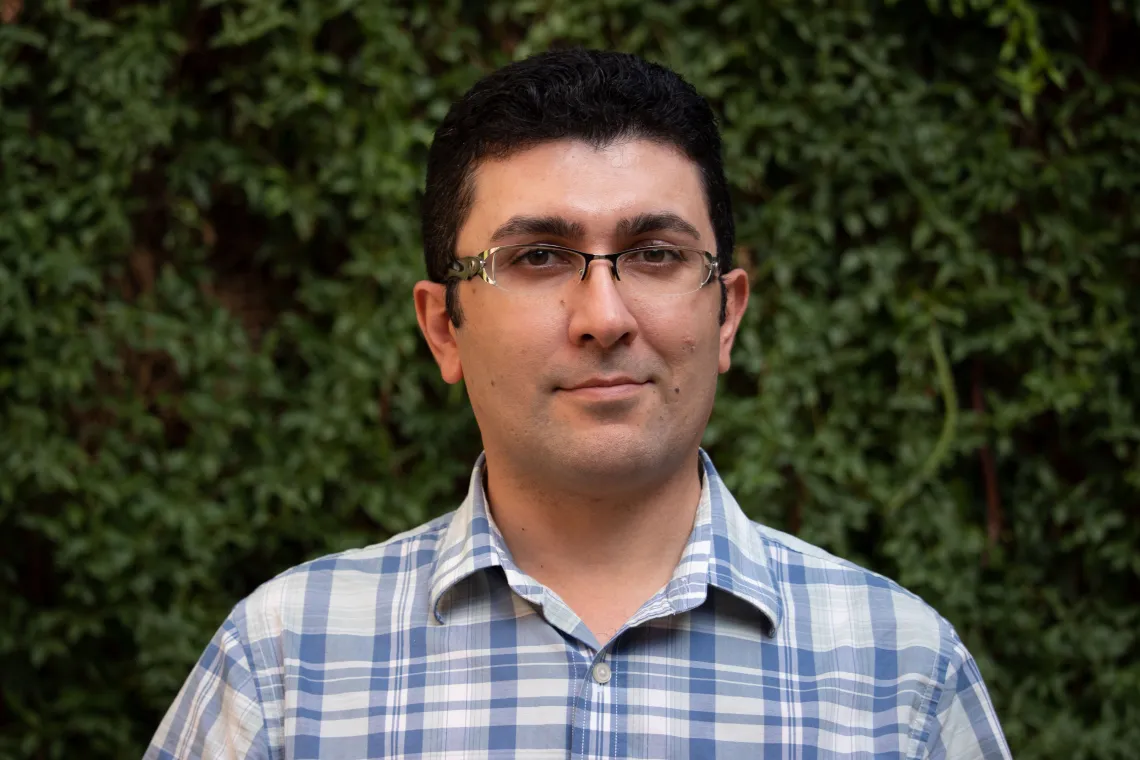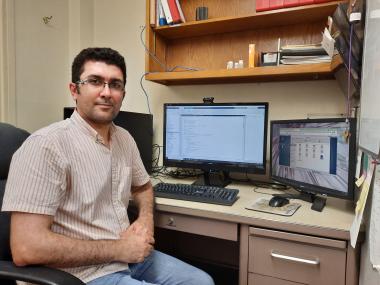Mohammad Gohardoust, Ph.D., Spring '21 Outstanding Graduate Dissertation Awardee

Mohammad Gohardoust
Tell us a little about yourself.
I was born and grew up in Tehran, Iran. For the bachelor’s degree, my university was in the northern part of Iran, a business city with lots of rain and agricultural lands which grabbed my interest in environmental sciences. I studied irrigation and drainage engineering and got gradually familiar with computer coding. To me, it was fascinating how computers can accelerate and enrich my scientific studies. I was lucky enough to have friends interested in soil physics, with whom I continued my scientific works and collaborated in some
projects during my master's. My Ph.D. advisor Dr. Markus Tuller(link is external) was involved in one of our projects and offered me the opportunity to come to the U.S. as a Ph.D. student and start working in his lab group.
What is your research and what are the broader impacts?
My dissertation project was concerned with the application of numerical simulation in soilless culture. So, my goal was to simulate water flow and solute transport in commonly used growth modules in greenhouses considering different substrates. In this regard, there were three major components to my dissertation.

courtesy of Mohammad GohardoustMohammad Gohardoust working in the Tuller laboratory at ENVS.
Initially, to be able to use numerical simulations, we need to parameterize involving mathematical models via robust and reproducible measurements. So, regarding this, I measured the hydraulic and physicochemical properties of six different soil substrates in the lab. Another thing was, since mixing organic and inorganic substrates is a common practice to search for the mixture with optimum properties, I proposed a model to estimate the mixture hydraulic properties with an arbitrary mixing ratio from those of individual substances. This will save a lot of time and money as compared to currently used trial and error practices. And finally, I was able to adapt and verify an open-source numerical code for simulation of water flow and solute transport in the soilless substrates. The advantage of the code is that it can be employed in high performance computers, in addition to some other favorable properties, as compared to previously existing commercial codes.
Key Takeaway
- Numerical simulations can play an important role in designing, optimizing, and managing soilless culture practices and can save lots of money, time, and resources.
READ DISSERTATION(LINK IS EXTERNAL)
What did you enjoy most about graduate school and your research?
Graduate school was a golden time for me to be exposed to and learn from the areas of environmental science that were new to me. I'm grateful to have the freedom to work on other projects in my supervisor’s group, besides my dissertation research. Another great thing was the chance to be in contact with awesome people in the department and to make friends with students with diverse cultural backgrounds.
Future plans?
I'm currently a researcher here at ENVS working on a USDA-funded project. This project is seeking to find a novel approach to remote sensing of crop transpiration to improve water use efficiency in food and stock production systems. I just started this position, and for the future, I’m open to any opportunities, whether it might be in academia or somewhere else. The only requirement is that it should suit my interests and get me excited.
Words of advise?
Believe in yourself and your capabilities and embrace new opportunities which might seem to be challenging at first glance. There might be days in which you feel frustrated, just be patient and don't give up.
